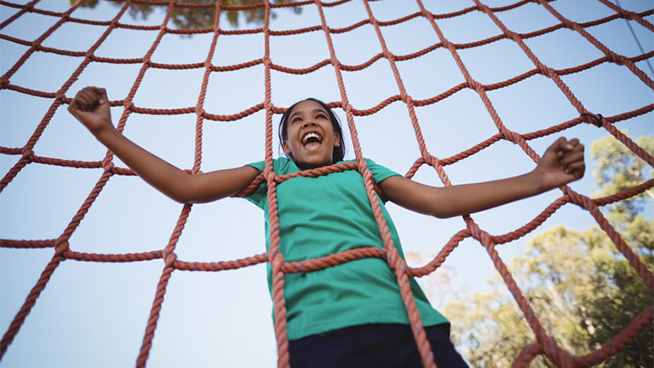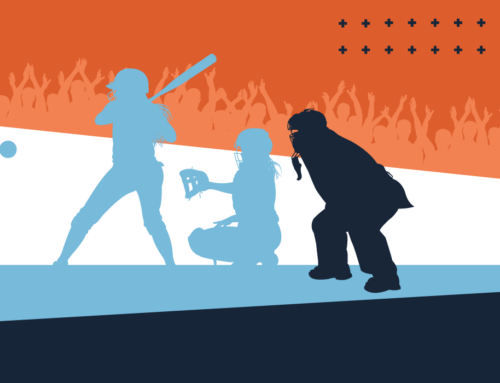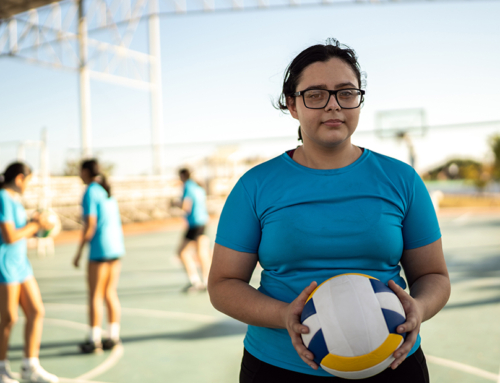Obstacle Course Racing (OCR) has garnered a reputation for being a rather grueling event to partake. Take one of the most popular organizations, Spartan Race, and one will notice that it is geared towards complete and utter physical exertion with some mental toughness thrown in for some spice. Their entire spiel and marketing scheme is to replicate the trials of the Spartans of old.
Looking at other Obstacle Course Racing events, one will notice that a similar theme evolves from the mud to the challenging obstacles to the swag of a medal at the finish line to be earned. Also, photos and videos usually show adults participating in these events, so how do OCR’s relate to young athletes?
That’s easy. It’s because nearly every Obstacle Course Racing event has a kids’ race or event associated with it. Take Spartan Race again. Every event weekend they have kids’ races going on parallel to the adult’s races.
Now, the kids’ races at every event are not as long nor skill-intensive with the distances being between a half-mile to two and a half miles with the obstacles smaller and safer for tiny hands and bodies. Nevertheless, Obstacle Course Racings are for everyone, including young athletes.

Happy girl cheering while climbing a net during obstacle course in boot camp
Scaled-Down Events
Most of the obstacles are scaled down versions of the adult obstacles. A-Frame Cargo Net/Climb, Spear Throw, “Barbed Wire” Crawl, Monkey Bars, etc., all can be featured in a kids’ race.
The A-Frame Cargo Net/Climb is usually much smaller at probably only 8 feet high as compared to the 20 feet of the adult’s version. And the “Barbed Wire” Crawl usually will just be a crisscross of paracord tethered over a lane. No barbed wire for the kiddos; that stuff is sharp! And monkey bars are usually lower to the ground as well as have smaller rungs to complete.
Whatever obstacles are featured, all will challenge a young athlete in ways that regular sports with their specific movements may not capture as effectively as Obstacle Course Racing.
The entire event will challenge a young athlete’s body, mind, and skill. Climbing, stamina, strength, and coordination are all needed to complete the event.
Challenge Proffered and Crossover
Because OCR’s challenge a young athlete in all aspects of being an athlete, they will have a significant crossover to other sports in general. An athlete needs speed, stamina, strength, and skill to complete an OCR. To compete in a sport, an athlete needs a variety of these aspects. An OCR seems tailored for needing an equal balance amongst them all.
Take baseball, tennis, ping-pong, and similar stick-and-ball sports. Hand-eye coordination, reaction, and agility are needed to effectively compete in the sport. Navigating obstacles such as any climbing obstacle will require all of these aspects in some regard. Cargo net climbs are perhaps the most exhaustive of these aspects. A young athlete will need to have keen coordination, reaction, and understanding of their body to zip up and down the cargo nets with their unstable swaying.
In football, basketball, rugby and other sports that emphasize explosiveness, OCR’s again allow a young athlete to develop these skills that will crossover to their sport. Jumping over walls, tire flips, and bucket/boulder/stump carries all require an explosive edge to them. Wall jumps will develop and recruit the same posterior chain and jumping mechanisms as in diving in football and jumping in basketball. Tire flips will develop a similar structure of full-body explosiveness as football’s tackling. And carries place additional load on the young athlete that can replicate external load of equipment necessary in various sports such as football and hockey.
All sports typically require a certain amount of stamina and leg drive. OCR’s are no different since racing is in its name. Soccer, track, hockey, and basketball are the most obvious sports that benefit from this endurance training, but all sports will benefit from the stamina gained from an OCR. The duration of the run will impact the young athlete with more capability to go for longer during a sporting event. More than likely, OCR stamina will crossover to the young athlete feeling out-of-breath less often.
General Foundation
All this crossover talk starts to sound akin to some wedding-reception-dance-instruction songs, but it leads to general development for a young athlete. Crossover has become huge in the youth sports industry as studies have shown that sport-specificity too early leads to burnout, demotivation, and depression in a young athlete.
OCR’s give youth sports participants a different outlet for their skills. They allow young athletes time away from their sport while still maintaining their skills. They are enjoyable and have various distances and events, thus, differing difficulty levels for the developing athlete.
OCR’s are the king of general development since they require so many different facets of being an athlete. A young athlete more than likely will not see where the obstacles resemble or can carry over to their sport, but as soon as someone points it out, they will beam.
Enjoyment and Pure Fun
Thus, because OCRs require a balanced foundation of strength, stamina, speed, and skill, everything a young athlete does for an OCR will carry over to other sports. If the young athlete competes in multiple sports, OCR will be a perfect outlet and culmination for these skills. OCR’s employ lateral, frontal, and even vertical movements that aid young athletes’ general foundation. The obstacles require some combination of coordination, reaction, and innate sense of body awareness that all sports require.
And, to top it all off, at the finish line, not only will the young athlete more than likely be beaming from being coated in mud (what kid does not like to be covered in mud?), they also will be beaming with that clanking medal dangling from their neck!
Read More
Original article posted on stack.com



